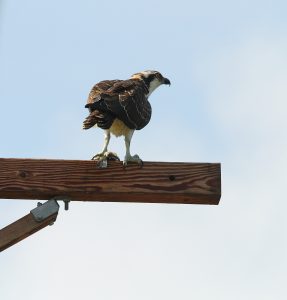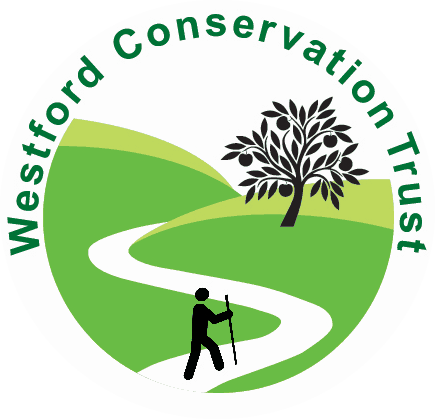
It might not come as a big surprise when I say that Henry David Thoreau is my favorite author. This winter I have been re-reading much of his work. I have discovered some new essays I didn’t know about in a book titled Thoreau: Collected Essays and Poems, edited by Elizabeth Hall Witherell. One of these essays has been particularly fascinating to me, Thoreau’s comments on a State-wide survey of the plants and animals of Massachusetts titled, Reports–on the Fishes, Reptiles, and Birds: the Herbaceious Plants and Quadrupeds: the Insects Injurious to Vegetation and the Invertebrate Animals–of Massachusetts, published in 1842. Though he was only twenty-five years old in 1842, Thoreau was a respected naturalist of his time, and was asked to review this lengthy survey. In his report, Thoreau observes, “Books of natural history make the most cheerful winter reading….[we]owe an accession of health to these reminiscences of luxuriant nature.” I have found this statement to be true.
Thoreau tells us that the survey finds 280 species of birds that reside permanently or part of the year in the State, “Those which spend the winter with us have obtained our warmest sympathy”. Of these he particularly mentions the nuthatch, chickadee, blue jay, crow, partridge, and hawk in winter. In spring, the robin, phoebe, lark, snowbird [junco] and shrike, flocks of geese, song sparrow, blue bird, fish-hawk [osprey]. In summer he mentions flicker, veery, cowbird, and vireo and in autumn, plover, finches, bobolink, goldfinch, snipe and loon. Its very interesting to read the survey report itself, which one can do through the magic of the internet.
In his essay, Thoreau criticizes the exactness and completeness of some of the data, but declares it “a good first try”. He also encourages us to go outside and discover for ourselves. He says, “The true man of science will know nature better by his finer organization; he will smell, taste, see, hear, feel, better than other men. His will be a deeper and finer experience.”
In reading the survey itself, its fascinating to see which plants and animals mentioned are still common in the State, which are now rare, which are not seen at all, and which are new to the State. In the section on birds, for instance, the partridge, veery, rusty blackbird, shrike, bobolink, meadowlark, Acadian flycatcher, and saw-whet owl, once common, are now rare. But some birds are much more common now than in 1842, the great-crested flycatcher, the peewee, cowbird, cooper’s hawk, snowy owl, merlin, titmouse, Carolina wren and pileated woodpecker. Some birds we consider common are not mentioned at all in the survey: turkey vulture, kestrel, and barn owl. The red screech owl is mentioned, but it was seemingly not known that the screech owl can also be grey. Perhaps it was thought to be a different species. It was also not recognized that the red-tailed hawk can be very dark. In the survey the dark red-tail is called the Black Warrin, a different species. Immature, dark bald eagles were thought to be a different species called the Washington Eagle.
You can read this huge survey online: Biodiversity library.org/reports on the Fishes, Reptiles and Birds of Massachusetts. As William B.O. Peabody, the author of the bird survey states, “it is the [better] part of wisdom to encourage and protect them all.”
Many thanks to all flora and fauna reporters for the month of March. Please send reports by April 26 for inclusion in next month’s column. You can write me at 7A Old Colony Drive, call me at 978-692-3907, or e-mail me at mariancharman@gmail.com.
Late February Reports:
Ginger Dries, Sherwood Drive. Four deer on our hill–first deer seen this winter. Also saw a rabbit once.
Rosemarie Koester, Providence Rd. February 28, saw another batch of red-winged blackbirds this morning, mostly young males.
March Reports:
Debbie Prato, Hayrick Lane. March 1, Canada geese at feeder. March 3, two friendly crows. March 15, five young deer in the morning. March 16, turkey vulture. March 17, chipmunk, song sparrow. March 20, lots of birds gathering nesting material and checking out birdhouses. March 22, mallards at feeders.
Marian/Bill Harman, Old Colony Drive. March 3, chickadees, titmice, cardinal, house finch and flicker all singing their spring songs. March 5, four juncos, three titmice, three chickadees, one blue jay, one white-breasted nuthatch, two downy woodpeckers, two goldfinches, one Carolina wren, three beautiful, shiny tom turkeys. March 12, a bear hit feeders across the road from us. March 14, first red-winged blackbird on suet. March 5, first grackle on suet. March 16, about twenty grackles vying for suet, many more in the trees around condo. Two flocks of turkeys came through four big males in the first flock, then, another flock of six young males. A walk on the swamp trail by the beaver dam: one hooded merganser, brown creeper singing in the woods, first phoebe heard, a few red-winged blackbirds on territory, red-tailed hawk overhead, titmice, chickadees, nuthatch, red-bellied woodpecker, hairy woodpecker, large and small deer tracks, opossum track. Cider Mill Pond. March 19, at Cider Mill Pond: pileated woodpecker heard clearly. March 22, at Mill Pond: nineteen goldeneyes. March 24, beautiful day, 48 degrees. A walk on the swamp trail: phoebe, song sparrow, and wood duck heard in the swamp. White-throated sparrow heard in the woods. March 25, a walk in the meadow: skunk cabbage blossoming in and around the swamp. Sphagnum moss there too.
Ginger Dries, Sherwood Drive. March 4, Carolina wren on feeder. March 10, snowing. It was funny to hear the cardinal singing as we were shoveling snow. March 17, bobcat came again, came right by deck, not interested in the bird feeder. It was beautiful. March 22, three wild turkeys showed up, first time seen since end of summer. Also blackbirds, all the woodpeckers and all the regulars.
Bob Price, Stratton Hill Road. March 13, two or three blackbirds at the feeder.
Tom Ennis, Almeria Drive. March 14, first sighting (or sounding) of a woodcock this year, just a tad later than usual.
Esther Donlon, Providence Rd. March 19, wildlife camera shows a coyote and perhaps a fox.
Marian Harman is a member of the Westford Conservation Trust, a non-profit conservation organization whose purpose is the preservation of Westford’s open spaces and trails. The Trust welcomes new members and volunteers. Check out our website at westfordconservationtrust.org or visit us on Facebook.
